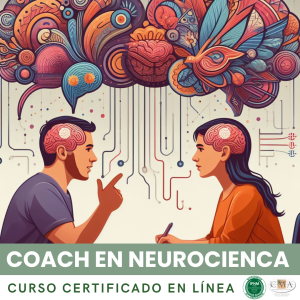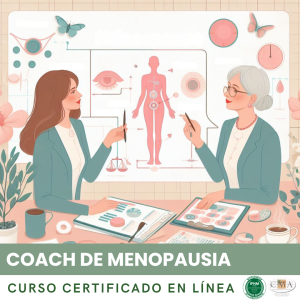
Managing the client’s emotions and resistances is a key skill for the Ikigai Coach. In the process of exploring the ikigai, it is natural and common for the client to go through moments of doubt, fear, or frustration. These emotions and resistances are often a sign that he is approaching sensitive areas and bearers of change. The challenge for the coach is to welcome these manifestations with kindness and to use them as levers of awareness and transformation.
Empathetic and non-judgmental welcoming is the first step in managing emotions. When the client expresses anger, sadness, or anxiety, the Ikigai Coach refrains from minimizing or rationalizing these feelings. He welcomes them with attentive listening and a non-judgmental attitude (sub-module 6.1), thereby signaling to the client that all his emotions are legitimate and welcome in the coaching space. Empathic reflections such as “I perceive a lot of sadness in what you are sharing” or “I hear the anger rising in you” allow the client to feel heard and validated in his emotional experience.
Normalization is another powerful technique for managing emotions. By reminding the client that his reactions are normal and shared by many others in similar situations, the Ikigai Coach assists him in letting go of the shame or guilt that can hinder exploration. He can rely on statistics, testimonies, or his own experience to show that emotional ups and downs are an integral part of the journey towards ikigai.
Curious and benevolent exploration of emotions allows the unveiling of their meaning and underlying message. The Ikigai Coach uses open-ended questions (sub-module 6.2) to assist the client in unfolding his emotional experience: “Can you describe this anger to me? Where do you feel it in your body?”, “If this sadness could speak, what would it say?”. By exploring the physical sensations, images, and words associated with emotions, the client gains perspective and accesses a more fine understanding of his inner experiences.
Emotional regulation also involves teaching breathing, relaxation, or mindfulness techniques (sub-module 8.6). When the client is overwhelmed by an emotion, the Ikigai Coach may invite him to take a few deep breaths, release tensions in his body, or observe his thoughts with detachment. These tools aid the client in calming down and regaining a mindset conducive to exploration. The coach, however, ensures not to use these techniques to avoid or shortcut emotions, but rather to go through them with more serenity.
Resistances often manifest as avoidance, procrastination, or blocking in the face of certain exploration or action paths. Rather than perceiving them as obstacles, the Ikigai Coach welcomes them as potential allies, carrying an important message for the client. With curiosity and respect, he invites the client to explore the fears, beliefs, and needs hiding behind these resistances: “What makes you hesitant to explore this path?”, “What is this part of you that resists trying to protect?”. By giving a voice to resistances, the coach assists the client in taming them and finding ways to honor them while moving towards his ikigai.
Reframing is a valuable tool for managing resistances (sub-module 8.3). By proposing an alternative reading of obstacles, the Ikigai Coach opens up new perspectives and possibilities. For example, facing a client who says he is “too old to change careers”, the coach can reframe by highlighting that his experience and maturity are valuable assets for a successful transition. This shift in viewpoint assists the client in overcoming his blockages and mobilizing his resources.
Recognizing the small steps and learnings is crucial to maintain motivation and commitment against resistances (sub-module 8.10). The Ikigai Coach celebrates every advance, however minimal, and highlights the lessons drawn from the difficulties encountered. By aiding the client in developing a kind and encouraging look at his journey, he strengthens his resilience and determination to pursue his ikigai despite obstacles.
Anecdote: During a session, Julien, a 40-year-old client, burst into tears when talking about his feeling of being “stuck” in a job that no longer suited him. The Ikigai Coach welcomed these tears with gentleness and empathy, by normalizing: “I perceive all the suffering and frustration that this situation generates in you. Many people go through this kind of crisis of meaning at one point in their lives, it’s a normal and healthy stage.” Then he invited Julien to explore his emotion in more detail: “If these tears could speak, what would they say?”. Julien then realized that behind his sadness was a deep desire to feel useful and connected to his values in his work. This awareness was a trigger to clarify his ikigai and explore new professional paths in line with his deep aspirations.
By developing his capacity to welcome and manage the client’s emotions and resistances, the Ikigai Coach creates the conditions for a support which is both compassionate and challenging. He helps the client to turn his blockages into springboards towards a life more aligned with his ikigai. This relational skill, at the crossroads of empathy, emotional regulation, and reframing, is a pillar of the knowledge of the Ikigai Coach. It allows him to journey alongside the client with sensitivity and discernment, to aid him in fully embracing his potential and inner truth.
Key Takeaways:
– Empathetic and non-judgmental reception of the client’s emotions is crucial. The Ikigai Coach uses empathetic reflections to signify to the client that his feelings are valid.
– Normalization aids the client in overcoming the shame or guilt that can block exploration. The Ikigai Coach reminds that emotional ups and downs are a normal part of the journey towards ikigai.
– Curious and benevolent exploration of emotions, by asking open-ended questions about feelings, images, and associated words, allow unveiling their profound meaning.
– Emotional regulation involves teaching techniques of breathing, relaxation, and mindfulness to aid the client going through emotions with serenity.
– Resistances are welcomed as allies carrying an important message. The Ikigai Coach aids the client in exploring the fears and needs behind resistances to tame them.
– Reframing opens new perspectives in the face of resistances and blockages. It aids the client in mobilizing his resources.
– Recognizing each small step and learning strengthens the resilience and motivation of the client in the face of difficulties.
In summary, managing emotions and resistances through empathic welcoming, normalization, exploration, regulation, reframing, and recognition is a key skill of the Ikigai Coach in aiding the client to turn his blockages into springboards towards his ikigai.
👉 To download docx (Editable) file click here : Click here
👉 To download PDF file click here : Click here
👉 To download MP3 file click here : Click here





